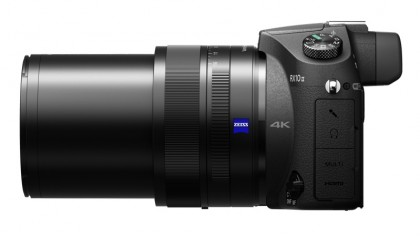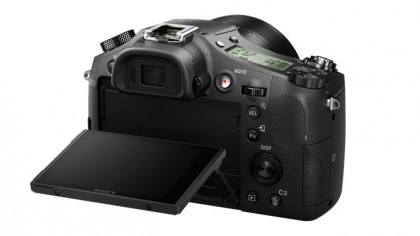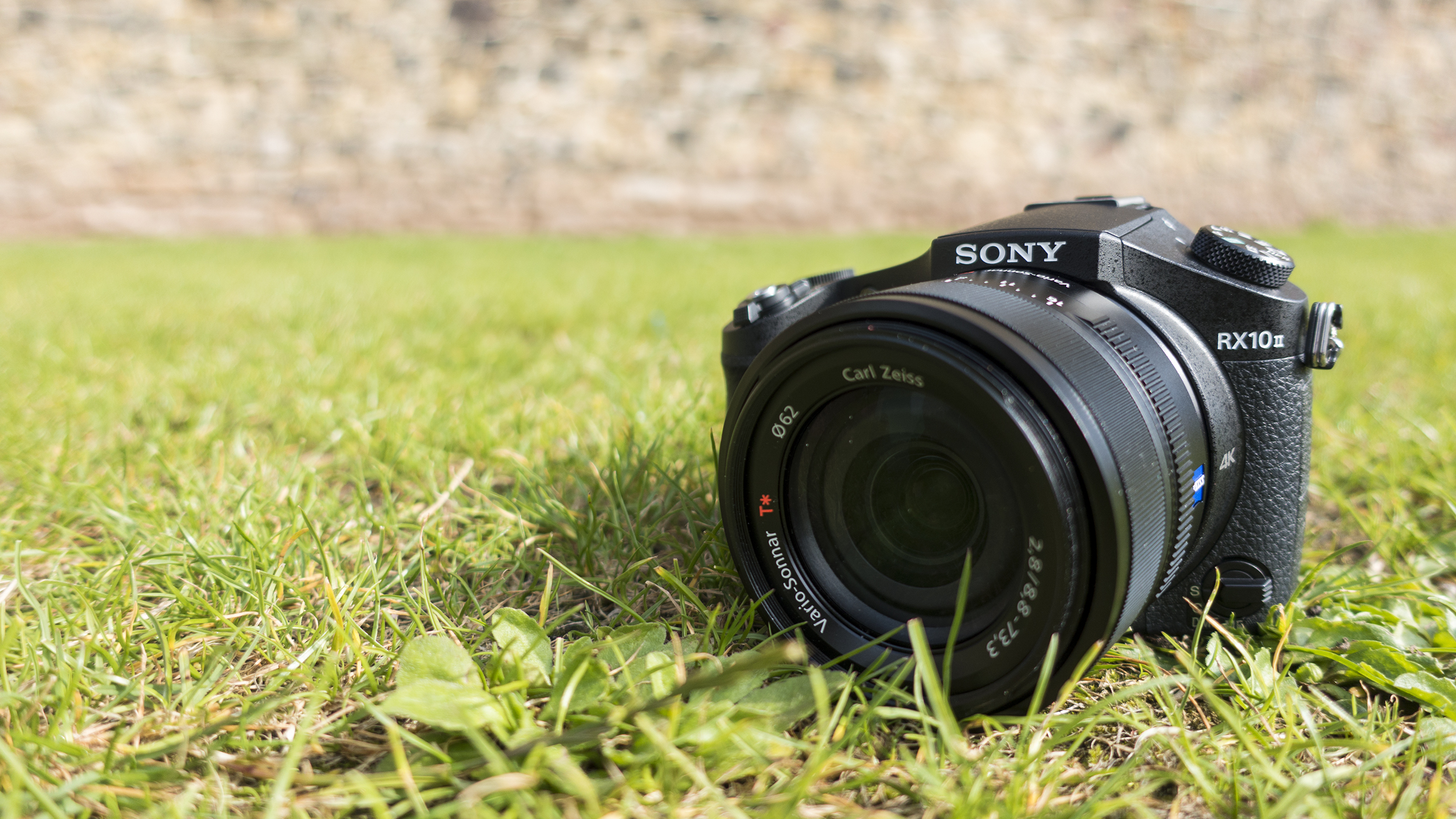Why you can trust TechRadar
Sony has kept pretty much the same body design and layout for the second generation of the RX10 as for the first – it's the interior specifications which have changed. If you've used the original RX10, you're going to find the RX10 II very familiar.
This is a substantial bridge camera which could easily be mistaken for a DSLR. It does have a large, chunky grip with a textured coating that makes it feel nice in the hand, but while it's possible to use the camera one-handed, it's more likely that you'll want to use a second hand to steady the lens.
On the top of the camera is an LCD screen which displays key settings, such as aperture and shutter speed. It's useful for quickly checking that you have the settings you want selected, and it can be illuminated if you're shooting in low light.
Also on the top of the camera, within easy reach of your thumb, is an exposure compensation dial, which has just the right amount of stiffness to ensure that you're not going to accidentally knock it in everyday operation. On the opposite side of the top plate is a mode dial on which you'll find one new addition: the HFR mode (high frame rate), which is used for creating super slow motion movies.

Most of the RX10 II's buttons are positioned on the back right of the camera, which makes it easy to change most settings with your right thumb. One notable exception is the main menu button, which is located just next to the viewfinder – it's a button you may find you don't need to press all that often though.
There's also a switch for altering the focusing mode, just next to the lens on the front of the camera – here you can switch between Single, Continuous, DMF (Direct Manual Focus) and Manual Focus. DMF is useful for making fine adjustments after autofocus has been confirmed by the camera, such as when shooting a macro subject.
There are two rings around the RX10's substantial lens. One of those is an aperture ring, which should be appreciated by enthusiasts. A nice touch here is that you can either have it click as you move through the stops, or have a smooth motion – the latter is particularly handy when you're shooting video.
The second ring can be used to extend the zoom lens (alternatively you can use the zoom switch around the shutter release), or for adjusting focus when using Manual Focus.
A 'quick'-type menu can be accessed by pressing the function (Fn) button. This menu is completely customisable, enabling you to switch out functions you use rarely for those you want to change more often. It's very handy to have, and works well in conjunction with the two dedicated customisable buttons. Both the left and right key can also be assigned to a function of your choice too.

By default, to set the autofocus point (if you have Focus Area set to Flexible Spot), you press the central button on the navigational pad, and then use the directional keys to choose the point you need. Although it's quite an easy process, it would be so much quicker if the camera screen was touch-sensitive. You can also set the central button to access another function if you prefer.
Like its predecessor, the RX10 II's screen is not fully articulated, but instead tilts downwards and upwards for help with shooting from some awkward angles, such as low down. You can't flip the screen forward for shooting selfies though.
The RX10 II's viewfinder is excellent, and the increase in resolution over the original RX10 has given it a good boost. There's a sensor that detects when the camera is lifted to your eye and switches the viewfinder on and the screen off – this is a seamless operation that feels very natural. What's more, there's an eyecup around the viewfinder which helps to block out distracting surroundings when you're composing images.
Amy has been writing about cameras, photography and associated tech since 2009. Amy was once part of the photography testing team for Future Publishing working across TechRadar, Digital Camera, PhotoPlus, N Photo and Photography Week. For her photography, she has won awards and has been exhibited. She often partakes in unusual projects - including one intense year where she used a different camera every single day. Amy is currently the Features Editor at Amateur Photographer magazine, and in her increasingly little spare time works across a number of high-profile publications including Wired, Stuff, Digital Camera World, Expert Reviews, and just a little off-tangent, PetsRadar.

